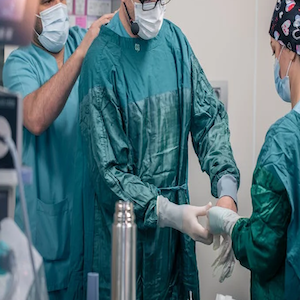Prevalent practices and changing trends in the management of vesicovaginal fistula: a cross-sectional study from a nationwide questionnaire-based survey of urologists from a developing country

All claims expressed in this article are solely those of the authors and do not necessarily represent those of their affiliated organizations, or those of the publisher, the editors and the reviewers. Any product that may be evaluated in this article or claim that may be made by its manufacturer is not guaranteed or endorsed by the publisher.
Accepted: 18 October 2023
Authors
Vesicovaginal fistula (VVF) management is primarily backed by evidence from retrospective studies and expert opinions and therefore lacks standardization. Newer generations of surgeons are more proactive toward changing clinical practices in domains lacking good-quality evidence. This survey-based cross-sectional study aims to elicit consensus on management practices regarding various domains of VVF management and look for any changes in clinical practice trends. A nationwide survey of urologists was conducted, and responses were grouped into 3 categories (overall response, response from young urologists, and response from experienced urologists) and compared. Based on the level of overall consensus, the responses were categorized as highly preferred, preferred, and somewhat preferred. Consensus was noted in conservative and endoscopic management of VVF, timing of VVF repair, definition of simple/complex VVF, approach for surgical repair for trigonal and supratrigonal VVF, use of interposition tissue for repair, and patient positioning in the postoperative period. A lack of consensus was noted in other domains. Changing trends in clinical practices were noted in attempts at conservative and endoscopic management, investigations considered mandatory for evaluation, surgical approach for complex VVF with bladder neck involvement and radiation-induced fistulas, the use of interposition grafts during surgical repair, the use of cystograms during follow-up, and the definition of a successful repair. There is uniformity in practices regarding many domains of VVF management. Those areas, where discordance in opinions is noted, require further research to bring standardization into practice. Regarding certain aspects of VVF management, there appears to be a change in trends among the younger generation of urologists.
How to Cite

This work is licensed under a Creative Commons Attribution-NonCommercial 4.0 International License.






